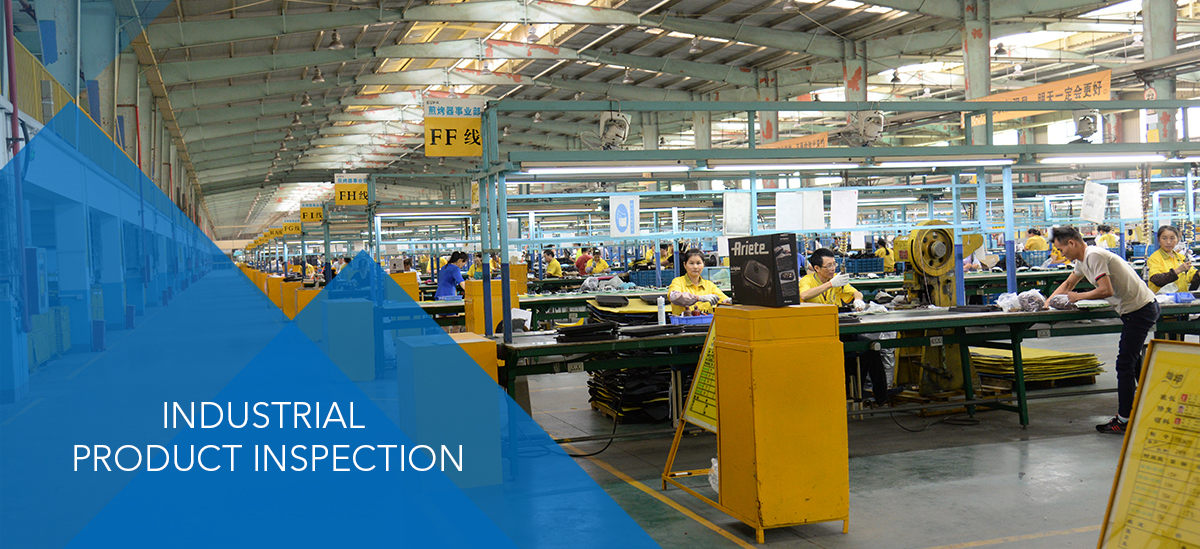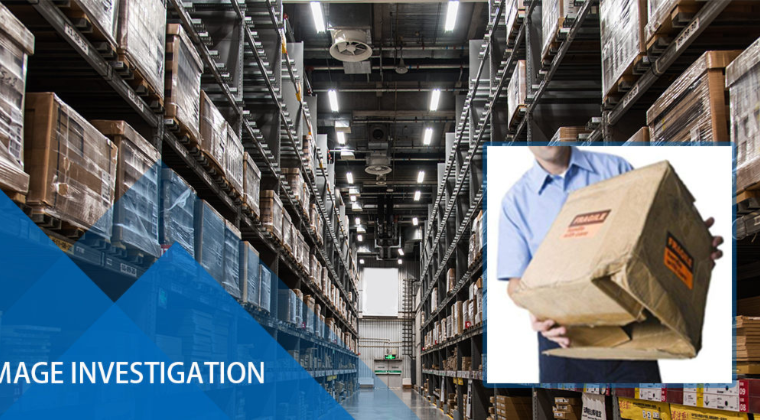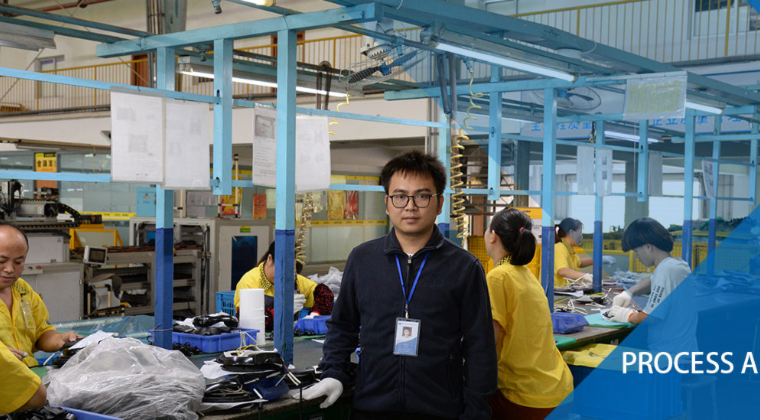Garment and apparel | Footwear | Home textile | Fabric | Bags and Luggage
In the footwear industry, varied materials and manufacturing processes make quality control essential to ensure compliance with various regulations, standards, substance restrictions, labelling, and testing requirements.
Before the footwear leaves the factory and arrives at the retail stores or online shops, the goods should be properly inspected for quality control so that buyers and consumers will not be disappointed. GIS Inspection (General Inspection Service) is a global provider in shoes and footwear quality control inspection services.
At GIS Inspection, we have teams of well-trained field inspectors with footwear and inspection knowledge to perform footwear inspection quality checks (QC) for your shoes and footwear products, whether they are athletic shoes, dress shoes, sandals, boots, safety shoes, and children's shoes. Send us your footwear inspection enquiry anytime for discussion!
Content
Footwear Quality Control Inspection
In shoes and footwear manufacturing, delivering products of the highest quality is paramount for brand reputation, customer satisfaction, and overall business success.
Effective footwear inspection extends beyond visual assessment. It encompasses a comprehensive evaluation of various factors that contribute to the overall quality, safety, and performance of footwear products. Footwear quality control ensures that shoes, boots, and other footwear items meet industry standards, are safe for consumers, and provide comfort and durability.
Footwear Quality Control Inspection is a systematic process to assess the quality, safety, and compliance of footwear products before they reach the market. It involves checking materials, workmanship, functionality, and regulatory compliance to ensure the product meets established standards.
Different Types of Footwear Products
GIS Inspection provides comprehensive footwear inspection services for a wide variety of men's, women's, and children's shoes, encompassing all common materials and styles. This includes, but is not limited to:
- Sports Shoes
- Roller Shoes
- Leather Shoes
- Sandals
- High Heels
- Flat Shoes
- Mesh Shoes
- Slippers
- Canvas Shoes
- Rubber Shoes
- Rain Boots
- Safety Shoes
- Boots
- Loafers
- Children's Shoes
The Importance of Footwear Inspection
Shoes and footwear inspection is a critical aspect of quality control in the footwear industry. It ensures that footwear products meet the necessary standards for comfort, durability, safety, and performance.
Quality footwear not only provides comfort but also contributes to overall foot health, preventing discomfort, injuries, and potential hazards.
By implementing stringent quality control measures, companies can ensure consistent product quality, meet consumer expectations, and maintain competitive advantages in the global market.
Regulations and Standards for Footwear Quality Control
Shoes and Footwear Regulations in the EU
Shoes and footwear imported and manufactured in the European Union are subject to various regulations and standards.
General Product Safety Directive (GPSD)
The European Union developed the General Product Safety Directive (GPSD) to ensure that imported or manufactured products are safe to use before they are placed on the EU market, including footwear.
EN Standards
EN standards can be applied to ensure the safety and quality of products such as footwear, even if said standards are not harmonised under any specific directive or regulation, such as the GPSD.
Below we list a few examples of EN standards that cover footwear:
- EN 12222 – Footwear – Standard atmospheres for conditioning and testing of footwear and components for footwear
- EN 12745 – Footwear – Test methods for insoles – Heel pin holding strength
- EN ISO 22776 – Footwear – Test methods for accessories: Touch and close fasteners – Shear strength before and after repeated closing
- EN ISO 22649 – Footwear – Test methods for insoles and insocks – Water absorption and desorption
- EN ISO 19574 – Footwear and footwear components – Qualitative test method to assess antifungal activity (growth test)
Personal Protective Equipment (PPE) Regulation
Personal protective equipment (PPE) are products that consumers can wear to protect themselves from various hazards. To ensure the protection of consumers, the EU developed the Personal Protective Equipment (PPE) Regulation, which covers how PPE is designed, manufactured, and marketed throughout the EU.
- EN 13634 – Protective footwear for motorcycle riders – Requirements and test methods
- EN 13832-2 – Footwear protecting against chemicals
- EN 15090 – Footwear for firefighters
- EN ISO 17249 – Safety Footwear with resistance to chain saw cutting
REACH Regulation
The Regulation, Evaluation, Authorisation, and Restriction of Chemicals (REACH) Regulation limit the levels of chemicals, particularly heavy metals and other pollutants, in consumer products, including footwear and packaging.
Footwear importers and manufacturers should pay attention to the materials used for manufacturing their products and the potentially hazardous substances they may contain.
REACH covers multiple categories of consumer products, which include items such as leather shoes, textile footwear, polyester shoes.
Substances of Very High Concern (SVHC)
REACH includes the Substances of Very High Concern (SVHC) Candidate List, which contains substances that may cause negative and irreversible harm to the human body and the environment.
If your product contains more than 0.1% by weight of any SVHC, you should notify ECHA by registering your products and substances in the SCIP database.
Shoes and Footwear Regulations in the US
Footwear imported and manufactured in the United States is covered by various regulations, standards, substance restrictions, labeling, and testing requirements.
ASTM Standards: Footwear
Here are some examples of ASTM standards that cover footwear:
- ASTM F2412 – Standard Test Methods for Foot Protection
- ASTM F2413 – Standard Specification for Performance Requirements for Protective Footwear
- ASTM F2232 – Standard Test Method for Determining the Longitudinal Load Required to Detach High Heels from Footwear: Proper performance of this test method requires the height of the footwear’s heel to be 20 mm (13/16 in.) or more
- ASTM F2892 – Standard Specification for Performance Requirements for Soft Toe Protective Footwear (Non-Safety / Non-Protective Toe): requires footwear devices to be puncture resistant.
- ASTM F1818 – Standard Specification for Foot Protection for Chainsaw Users: requires foot protective devices to be resistant to cuts by power chainsaws
- ASTM F539 – Standard Practice for Fitting Athletic Footwear: requires athletic footwear, such as those for running, tennis, and basketball, to properly fit the wearer
- ASTM F1117 – Standard Specification for Dielectric Footwear: requires dielectric overfoot and overshoe footwear to provide the wearer with added insulation and isolation.
Children’s Footwear: CPSIA
The Consumer Product Safety Improvement Act (CPSIA) covers children’s products, including footwear for children of 12 years or younger. Ensuring CPSIA compliance involves lab testing, the creation of a tracking label and a children’s product certificate (CPC).
Types of Third-party Footwear Quality Control Inspection
By employing a third-party inspection entity, quality concerns will be identified and controlled at the source. Processing footwear inspection is an important part for retailers and brands to assure quality, that can identify defects and non-compliance during different stages of the footwear production process.
Audits for the Shoes and Footwear Industry
Factory Audit: An independent assessment of the manufacturing facility’s capacity, machinery, and workforce to determine if they can meet production demands while maintaining product quality.
Supplier Audit: Checking the company’s legal information, bank information, human resources, export capabilities, and more. The inspectors perform supplier verification audit, evaluating
Pre-Production Inspection(PPI)
GIS inspectors onsite will evaluate the first 10%-30% units produced to ensure compliance with necessary criteria, brand specifications, quality requirements which can firmly establish whether the manufacturer will be able to deliver on the promise to produce a quality product using the correct materials and manufacturing process, and orders shipping on time.
During Production Inspection (DUPRO)
The shoes and footwear will be examined for their materials and construction, appearance, fit and sizing, performance and safety to ensure that quality requirements and specifications are met. Inspectors identify and rectify any defects, irregularities, or deviations from quality standards that may arise during production.
If issues are identified, inspectors collaborate with manufacturers to promptly implement corrective actions, preventing the production of substandard lighting products.
Pre-Shipment Inspection(PSI)
We will select a random sample of finished shoes and footwear before shipment to ensure all items conform to the established quality criteria and functional requirements. It involves checking the material quality, verifying the accuracy of sizes, ensuring the proper construction, and examining the overall appearance of the shoes.
The process also includes testing the footwear’s durability and performance, confirming proper labeling and packaging, and ensuring compliance with both the importing and exporting countries’ regulatory standards.
It helps to identify any defects or non-conformities in the batch, allowing for corrections before the products reach the customer, thereby safeguarding the buyer’s reputation and minimizing the risk of costly returns or complaints.
Loading Supervision (LS)
The final but crucial step in the quality control process is properly preparing batches for shipping to destination markets. Loading Supervision (LS) is usually performed at the factory, forwarders warehouse, or port to verify count, confirm load, and seal the container.
Footwear Quality Control Pre-Shipment Inspection Checklist
Ensuring the quality of footwear before it reaches the market involves a comprehensive and detailed inspection process, from quantity verification to functional performance tests.
A comprehensive shoes and footwear pre-shipment inspection checklist is essential to ensure that all aspects of the product are inspected thoroughly. Here are some key areas to include in General Inspection Service quality assurance PSI checklist:
1. Quantity Verification
Accurate quantity verification prevents logistical issues and ensures that the client receives the correct number of products. By comparing booking and actual quantities, GIS inspectors check products and shipping cartons to verify that total quantity matches the order confirm the total quantity matches the order.
2. Workmanship inspection
The inspector will select a sample size according to the statistical sampling procedure ISO 2859-1, and conduct a visual check for any damages and flaws in workmanship and classify them as major, minor, or critical defects.
Appearance Inspection: Conduct a visual inspection of the footwear to identify any surface marks, color inconsistencies, or other cosmetic defects.
Construction Quality: Inspect the construction of the shoe, including stitching, bonding, and assembly. Look for issues such as loose threads, weak seams, and misaligned components.
3. Product Description Verification
GIS Inspection will to verify that the products conform to the specifications against PO, photos, and sample.
Style Consistency: Verify that the footwear style matches the approved sample and the client’s design specifications. This includes checking the overall design, materials, and color.
Material Verification: Confirm that all materials used in the footwear, such as leather, fabric, and soles, meet the quality standards specified by the client.
4. On-site Check
The selected sample will undergo rigorous testing to ensure that it functions properly and meets safety standards. The essential tests performed by our inspectors during an onsite inspection of shoes and footwear:
- Carton Drop test
- Assortment check
- Size fitting test
- Sharp component check
- Product size / Weight measurement
- Tape test on printed label
- Sole bonding test
- Barcode readability check
- Odor check
5. Packaging Inspection
Proper packaging and labeling protect the product and provide necessary information to retailers and consumers.
GIS inspectors will check the packing method, retail package artwork, correct content, and quantity within the package to ensure that everything is accurate and safe for transportation. Inner and outer packaging are inspected to ensure that they meet client specifications, with results provided in the footwear quality inspection report.
Footwear Quality Control Inspection Procedure
The inspector will select a sample size according to the statistical sampling procedure ANSI/ASQC Z1.4. The sample size and inspection procedures will vary depending on the product characteristics and your company’s requirements.
A general guideline of shoes pre-shipment inspection procedures:
- The inspector will visit the manufacturer on-site at the manufacturer's warehouse or production facility.
- Prior to the Pre-Shipment Inspection (PSI), all necessary compliance documents will be signed.
- Inspectors count products and shipping cartons to verify that the correct quantity of an order has been finished. In order to pass, 80% of an order must be finished and packed.
- The inspector selects a sample using a statistical sampling procedure (ANSI/ASQC Z1.4), and the number of items (AQL) will be defined in the contract.
- Conduct a visual check, verify key performance features such as slip resistance, comfort, and sizing, guaranteeing that your footwear products are not only stylish but also safe and functional.
- Perform safety tests to ensure that the footwear provides adequate protection and meets safety standards for its intended use.
- Examine labeling accuracy and packaging to ensure that your footwear is not only well-protected during transportation but also correctly labeled, complying with all relevant regulations.
- A detailed footwear inspection report will be compiled, summarizing the findings as "confirmed," "not confirmed," or "pending," and delivered to the client.
Footwear Quality Control Inspection Report
After performing the quality inspection in the factory, the inspector prepares the draft report on-site and reviews with the factory manager. The draft quality inspection report is a first overview of the shoes’ quality. It is made to show the manufacturer the main findings while the GIS QC is still in the factory.
The final footwear quality inspection report is very detailed in:
- Every single defect, non-conformity and conformities are mentioned and explained;
- All the tests performed are listed;
- Pictures of each findings are shown in order to ensure a clear understanding of the situation from the buyer;
The final footwear inspection report will be checked in detail by the GIS Inspection supervisor before being sent to the buyer. The objective is to ensure all the specifications have been verified, all the tests have been performed and the explanations are clear.
Check a footwear quality control inspection report!
GIS Inspection Quality Control Services in China and Asia
GIS Inspection(General Inspection Service) is an international third-party quality control inspection company in China. GIS provides comprehensive shoes and footwear quality control designed to protect your footwear supply chain safety. We have set up an inspection network covering China, Vietnam, Malaysia, India.
GIS only employs full-time inspectors. Our highly trained and experienced shoes and footwear inspectors are product experts who receive regular training in their field of specialization.
We offer Pre-Production Inspection(PPI), During Production Inspection (DUPRO) or Footwear Full Inspection services, and before delivery inspection to assess footwear products Pre-shipment Inspection(PPI).GIS product inspection services ensure that your products match your desired specifications.
Contact us for a chat about footwear inspection now and see how we can support you with monitoring the quality of your footwear!










